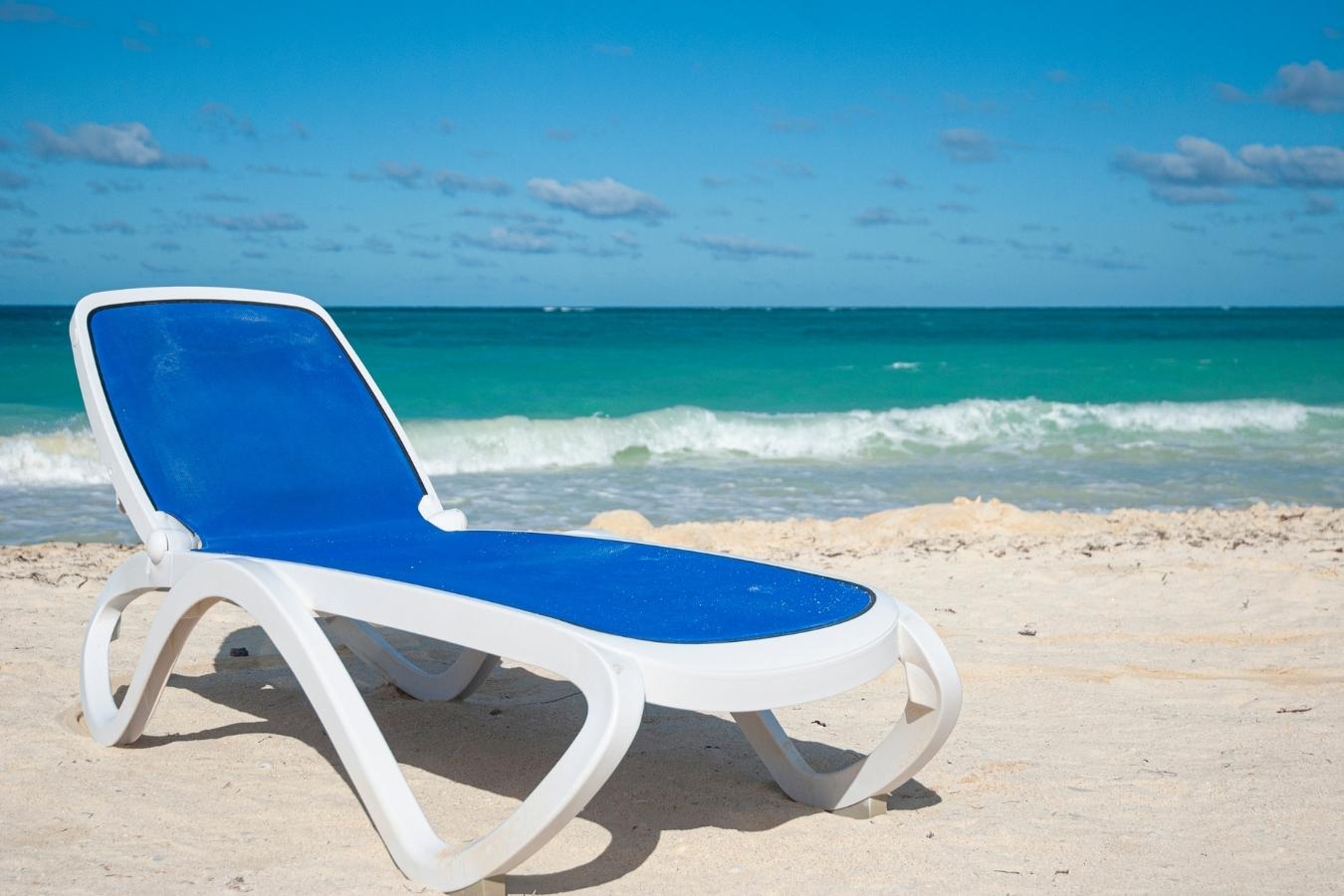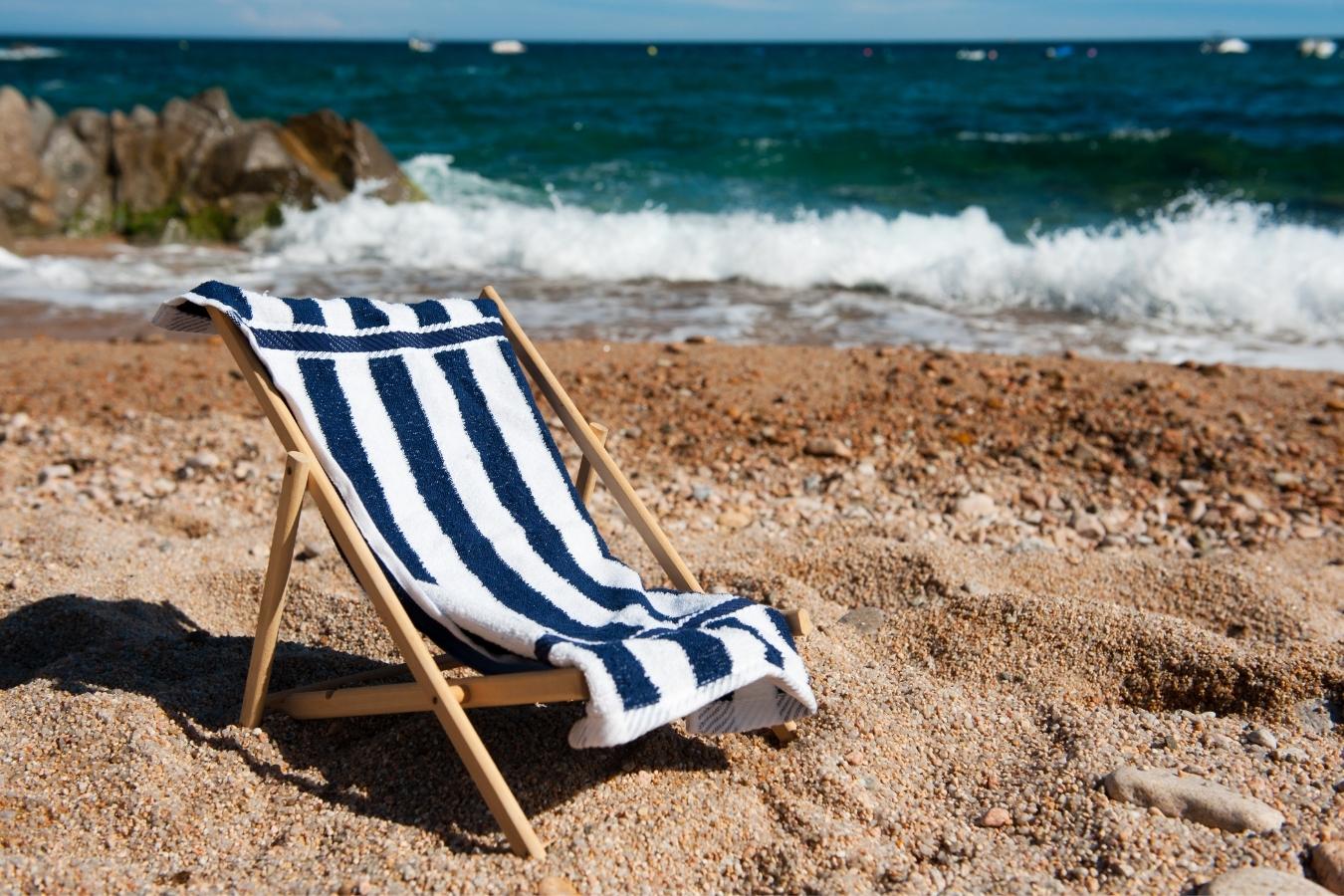Should you go to the beach if you have bad knees?
There’s no reason why you can’t go to the beach with bad knees, but you should try to avoid taking walks or jogs on the sand. The uneven surface can stress your joints and can make your knee pain worse, particularly after a surgery.
The beach is a wonderful place to relax; however, for those of us with bad knees, we worry about whether the beach will be harmful for our long-term health. Bad knees can make some experiences unpleasant, but there are still plenty of ways to enjoy beautiful beaches around the U.S. without having to worry about knee pain. The rest of this article will discuss the effects of the beach on bad knees as well as the best workarounds to avoid knee pain at the beach.
Is Just Going to the Beach Bad for Your Knees?

While there’s no reason to avoid going to the beach if you have bad knees, you should take it slow once you reach the sand. The most difficult part of the beach to traverse is the soft sand farther from the water.
Take it slow and steady as you make your way down and tread carefully to avoid putting undue strain on your knees.
Thankfully, once you find your ideal setup spot to settle down with a good book, there are plenty of great beach chairs to accommodate you and ensure that your knees are comfortable.
Some beach chairs for bad knees include the following:
- Amazon Basics Zero Gravity Chair
- PHI VILLA Zero Gravity Chair
- King Camp Portable Folding Chair
- Coastrail Outdoor Zero Gravity Chair
- Goplus Folding Zero Gravity Chair
- GOLDSUN Folding Cushioned Chair
- HEANI Removable Cushion Pad Chair
- KingCamp Oversized Padded Folding Chair
Lay flat chairs can open up to accommodate a person lying down. These are the most ideal for those with bad knees since you can relax them completely compared to a sitting chair; however, if you also struggle with back pain, a zero gravity chair might be more preferable.
Zero gravity chairs alleviate pressure by putting you in a position that doesn’t stress your spine. Lastly, a raised chair is a good idea if you’re planning to bring food to the beach since you don’t have to bend over and stress your body while eating.
For those with bad knees, when you get up out of a chair, be sure to exercise caution and use proper form to avoid knee pain. The following steps will help you get up more easily:
- Move your bottom forward to the front of the seat.
- Lean forward, utilizing momentum to begin standing.
- Squeeze your quads, glutes, and core as you stand to take advantage of those muscles and reduce strain on your knees.
When you go to the beach with bad knees, exercise caution on the uneven sand and bring the right chair for the job.
Can You Go in the Ocean with Bad Knees?

The ocean is a great place to relax and enjoy the feel of the warm sun, even for those with bad knees. In fact, swimming is a great therapeutic exercise for bad knees, serving to lubricate the joints.
There is little to no risk of going in the ocean if you have bad knees; however, you should be careful entering and leaving the water so you don’t strain your joints.
Because water holds the majority of your weight, there is significantly less strain on your knees, allowing you to increase both range of motion and strength without experiencing pain.
Be sure you exercise caution when entering the ocean and avoid swimming if the waves seem particularly rough. Strong tides can push you over, potentially causing injury. Stick to swimming when the ocean is calm and don’t perform any extreme movements.
Of course, that rules surfing out entirely for those with bad knees. The rapid twists and turns put a great deal of strain on the knee joints, not to mention those hardcore wipeouts that can cause injuries or long-term discomfort even in those with healthy knees.
Smooth, fluid motions should be your goal when swimming at the beach. You should avoid doing traditional breaststroke, however, since the method relies on a strong leg kick that may stress your knees. Better swimming methods for less impact on the knee include front stroke, back stroke, and butterfly.
Simply moving around in the ocean is good exercise to strengthen your knees. Walking or mock-running help strengthen the knees, and you can always use a floatation device to help support you in deeper waters. Kick back, relax, and enjoy the peacefulness of the waves.
Floating in the ocean is one of life’s simple pleasures, and it can be enjoyed to the fullest even with bad knees.
Is Walking on the Beach Bad for Your Knees?

Walking on the beach can be very bad for your knees. The uneven surface increases the strain on your joints and can therefore worsen knee pain.
Moreover, the slope leading down to the water’s edge can stress the kinetic chain all the way from your foot to your back, potentially worsening an already-unstable knee.
Not only is the unsteady surface detrimental, but because the sand sinks beneath your feet, walking on the beach requires significantly more effort than walking on a firmer surface. Less stability requires more muscle activity to take each step, making the process much more difficult overall.
If the stabilizing muscles around your knee are overworked from stressful walking, your knees are at a much higher risk of injury. If you want to walk on the beach, there are some precautions you can take to reduce the risk of injury.
First, exercise your knee to strengthen it before hitting the sand. Knee extensions, quad stretches, and clamshells are great for strengthening the muscles that support your knees.
Before you go walking on the beach, be sure to warm up and stretch to avoid injury, ensure that you are walking with proper form, and invest in some high-quality shoes. Flip-flops may be ok to use occasionally, but they offer virtually no support for your knees and are a very bad idea for walking.
Barefoot walking is also a viable option for the enthusiastic beachgoer, but healthy knees are a must. Walking on the beach barefoot strengthens the muscles in your arches and legs, providing good all-around exercise for your lower extremities.
While walking on the beach with bad knees isn’t a good idea, these practices can help reduce the risk of injury for those who want to walk along the shoreline.
Is Running on the Beach Bad for Your Knees?

Running on the beach is OK as long as you have healthy knees; it won’t cause injury. However, if you already have bad knees, running on the beach is not advisable.
When running on the beach, your hip and knee stabilization muscles have to work much harder to maintain balance, and since the sand absorbs some of your energy with each footfall, you have to work your muscles harder with each step.
As such, running on the beach is a great workout and perfectly fine for those with healthy knees. If you’re just starting out, stick to the relatively stable wet side right at the water’s edge and keep your runs short to see how your knees respond to the exercise.
Jogging or running on sand is tough, believe me. If you have bad knees, however, you’d do best to avoid running on the beach entirely. Especially for those with arthritis, knee problems become much worse when you expose them to unstable conditions like the uneven sand.
Similarly to running, the small stabilization muscles become overworked trying to adjust to the difficult conditions on the beach, leading to an increased risk of injury to the knee.
As with walking, if you’re planning on running on the beach, stretching beforehand is beneficial to prevent injury, and if you feel any pain in your knee or back, stop running immediately.
Conclusion
The beach is a wonderful place to spend some time, listen to the relentless waves, and soak up the sun. There are beautiful beaches all across the U.S. for everyone to enjoy, even if you suffer from bad knees.
Where possible, doing proper exercise can help reduce knee pain in general, making your beach trips less uncomfortable. When you’re settled at the beach, be sure to bring the best beach chair that suits your needs.
Whether it’s a lay flat or a zero gravity chair, invest in the right one for you to make your beach experience more pleasant. For those with bad knees, walking or running on the beach isn’t a good idea.
The uneven surface of the sand puts greater strain on the muscles that support your knee, and the soft ground makes every step much more difficult.
As such, if you have poor knees, walking on the beach isn’t going to help your knees; however, regular exercise and walking on steadier ground may be beneficial for some knee conditions. In the end, even those with bad knees can enjoy the natural beauty of the beach.
Frequently Asked Questions
- What are the best exercises for bad knees?
The best exercise form for bad knees is water aerobics. Water aerobics allow a low-impact environment to improve range of motion and strength.
- What are the benefits of walking on the beach?
Walking on the beach can reduce stress, increase strength, and promote cardiovascular health. It helps strengthen your quadriceps, as well as the arches and joints in your ankles.
- How to run with bad knees?
Running with bad knees can be beneficial for some conditions. Choose a softer surface to run on to avoid landing impact from injuring your knees.
References
- Does Ocean City Have Beach Chair Rentals? Local Advice! - October 29, 2022
- Can You Bring A Beach Chair To A Public Park? Definitive Answer! - October 29, 2022
- How Much Do Beach Chairs Weigh? - October 29, 2022


